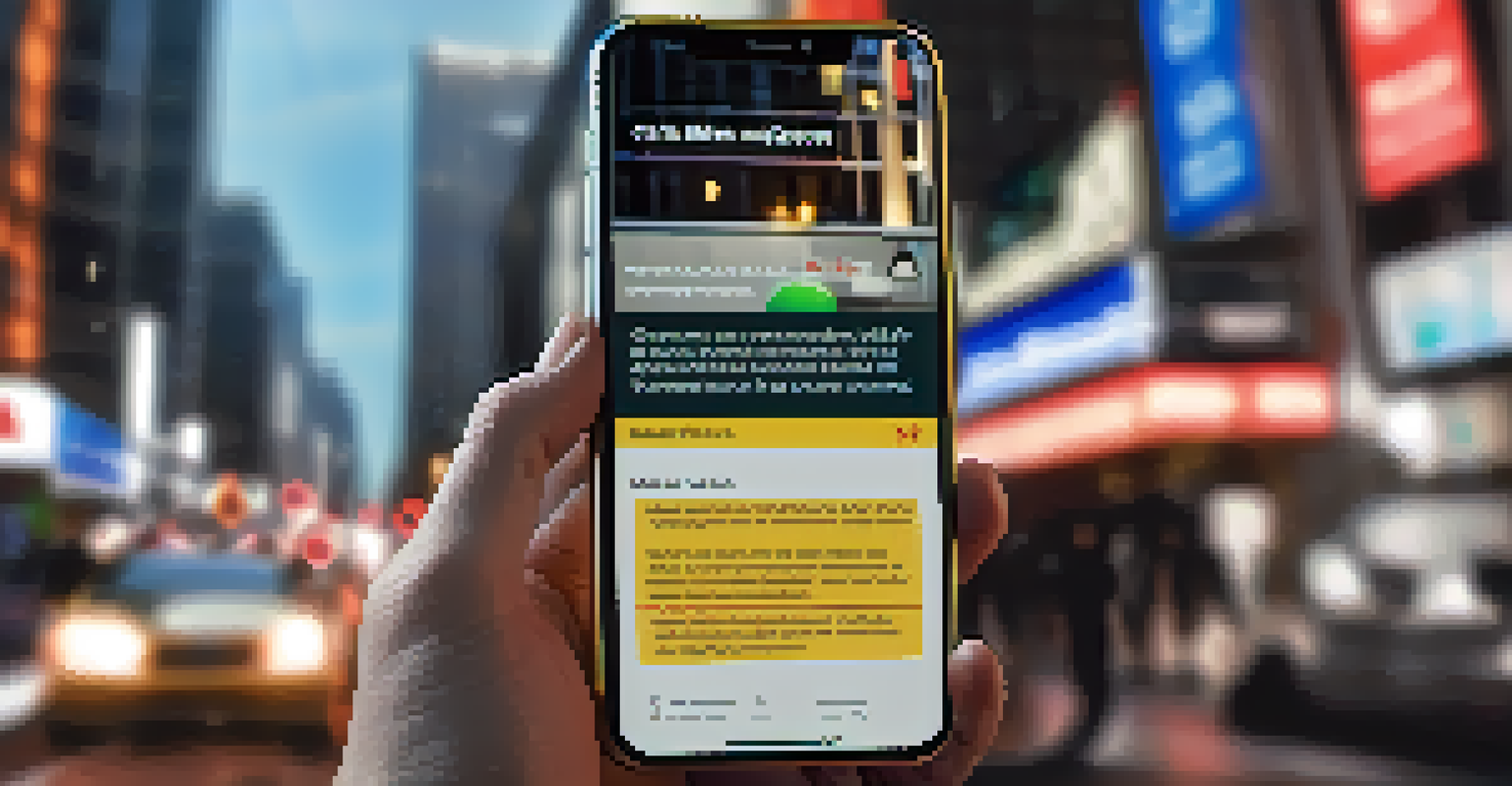Crisis Communication Plans: NYC's Effective Frameworks

Understanding the Importance of Crisis Communication Plans
Crisis communication plans are essential for any organization, especially in a bustling city like New York. They outline the steps to take when a crisis occurs, ensuring that the right message reaches the public swiftly and effectively. By having a solid plan in place, organizations can mitigate the impact of a crisis and maintain public trust. It's not just about responding; it's about being proactive and prepared for the unexpected.
In the midst of chaos, there is opportunity.
In a city known for its fast pace and high stakes, a well-crafted crisis communication plan can mean the difference between chaos and control. For instance, during a major event like Hurricane Sandy, clear communication helped New Yorkers understand evacuation procedures and safety measures. This type of preparedness not only protects lives but also reinforces the credibility of the organization issuing the information.
Ultimately, a crisis communication plan is a roadmap for navigating uncertainty. It helps organizations remain calm and collected, guiding them in how to convey their messages effectively. In doing so, they not only respond to the present crisis but also lay the groundwork for future resilience.
Key Components of NYC's Crisis Communication Framework
New York City has developed a robust framework for crisis communication that includes several key components. These elements often start with a designated crisis management team, responsible for coordinating the response and communication efforts. This team is pivotal in ensuring that all messages are consistent and clear, especially when multiple agencies are involved.

Another critical component is the establishment of communication channels. NYC utilizes various platforms, from social media to press releases, to disseminate information quickly. By leveraging multiple channels, they ensure that vital information reaches diverse audiences, from residents to tourists, in a timely manner.
Crisis Plans Build Public Trust
Crisis communication plans help organizations respond effectively to emergencies, maintaining public trust through clear and transparent messaging.
Additionally, NYC emphasizes the importance of training and simulations for crisis scenarios. Regular drills and workshops prepare teams for real-life situations, allowing them to practice their response strategies. This proactive approach not only enhances their ability to communicate effectively during a crisis but also fosters a culture of preparedness.
The Role of Technology in Crisis Communication
Technology plays a crucial role in NYC's crisis communication plans. With the rise of instant communication platforms, the city has adapted by using tools like social media and mobile apps to share updates in real time. These technologies allow for rapid dissemination of information, which is vital during emergencies when minutes can make a significant difference.
The single biggest problem in communication is the illusion that it has taken place.
For instance, during the COVID-19 pandemic, NYC utilized text alerts and social media to communicate health guidelines and safety protocols. This swift use of technology helped keep the public informed and engaged, ensuring they had access to the latest information as circumstances evolved. It also illustrated how technology can bridge gaps in communication during times of uncertainty.
Moreover, data analytics play a role in understanding public sentiment and behavior during crises. By analyzing social media trends and engagement metrics, NYC can tailor its messaging to address concerns and questions from the community. This responsiveness not only enhances trust but also fosters a sense of community during challenging times.
Case Studies: Successful Crisis Responses in NYC
Examining case studies of past crises in NYC reveals the effectiveness of its communication frameworks. Take, for example, the response to the 9/11 attacks; the city employed a multi-agency approach that involved extensive media coordination. This ensured that accurate information flowed to the public, providing updates on safety measures and recovery efforts while addressing fears and uncertainties.
Another notable example is the city's handling of extreme weather events, such as blizzards and hurricanes. During these emergencies, NYC's communication plan includes preemptive alerts, advising residents on preparations and safety tips. This proactive strategy not only informs the public but also encourages community resilience and preparedness.
Technology Enhances Crisis Response
The use of technology, like social media and data analytics, allows NYC to communicate swiftly and tailor messages during crises.
These case studies highlight the strengths of NYC’s crisis communication strategies. By learning from past experiences, the city continuously refines its approach, ensuring that it remains effective and relevant in the face of new challenges.
Building Trust Through Transparent Communication
Transparency is a cornerstone of effective crisis communication, particularly in a diverse city like New York. When organizations share honest and accurate information, they build trust with the public. In times of crisis, this trust is crucial, as it encourages people to follow guidance and take necessary precautions.
During crises, NYC leaders often hold press conferences to address the public directly. This not only provides a platform for disseminating information but also allows for a personal connection between officials and residents. By openly discussing challenges and what is being done to address them, leaders can foster a sense of shared responsibility and community.
Moreover, NYC’s use of feedback mechanisms, such as surveys and social media engagement, allows residents to voice their concerns and questions. By actively listening to the public, the city can adjust its communication strategies to better meet the community's needs, further solidifying trust and support.
The Importance of Post-Crisis Evaluation
Once a crisis has passed, it’s vital for organizations to conduct a thorough evaluation of their communication efforts. NYC emphasizes the importance of reviewing what worked well and what could be improved in future responses. This reflective practice is key to refining crisis communication plans and ensuring they evolve to meet new challenges.
For example, after a major event, the crisis management team gathers feedback from stakeholders and the public. This data helps identify gaps in communication and areas for enhancement, such as response time or message clarity. By learning from each experience, the city can ensure that its frameworks remain effective and responsive.
Post-Crisis Evaluation is Key
Evaluating communication efforts after a crisis helps refine strategies and improves future responses, fostering community resilience.
Additionally, sharing the insights gained from post-crisis evaluations with the public can further build trust. When residents see that their feedback is valued and used to improve future responses, they are more likely to engage positively during subsequent crises. This cycle of evaluation and improvement strengthens the overall resilience of the community.
Future Trends in Crisis Communication for NYC
As we look ahead, several trends are likely to shape crisis communication in New York City. One notable trend is the increasing reliance on digital communication tools, which enable faster and more efficient dissemination of information. As technology continues to evolve, NYC will need to adapt its strategies to leverage new platforms and tools effectively.
Another emerging trend is the focus on mental health during crises. Recognizing the psychological impact of emergencies, NYC is likely to incorporate mental health resources into its communication plans. By addressing the emotional well-being of residents, the city can foster a more holistic approach to crisis management.

Lastly, the importance of community engagement will continue to grow. Engaging with local neighborhoods and organizations can help NYC tailor its communication efforts to better meet the unique needs of diverse populations. This collaborative approach not only enhances the effectiveness of communication but also strengthens community bonds during challenging times.